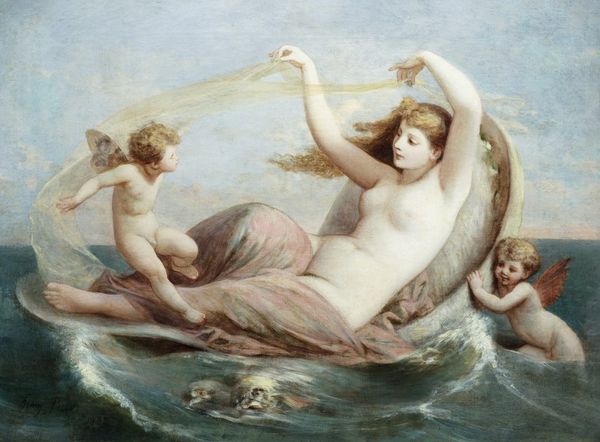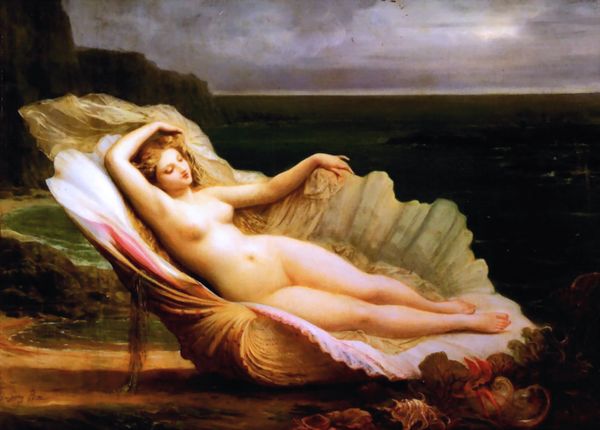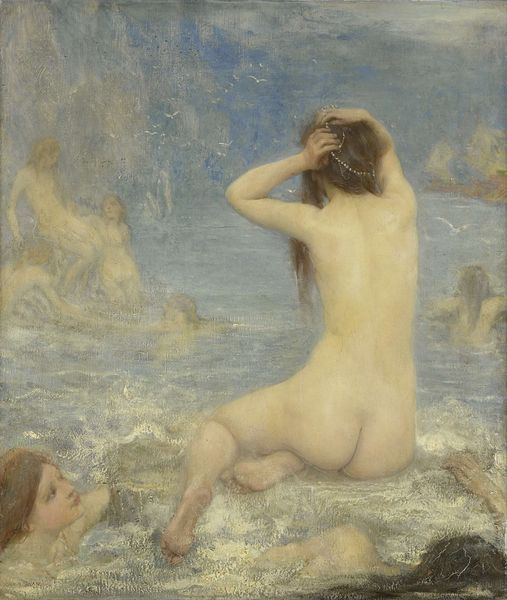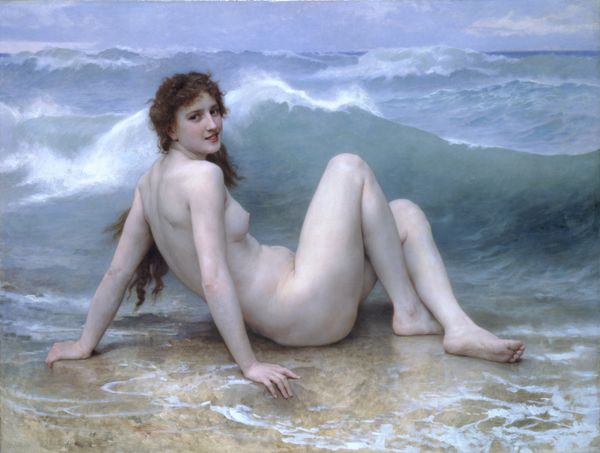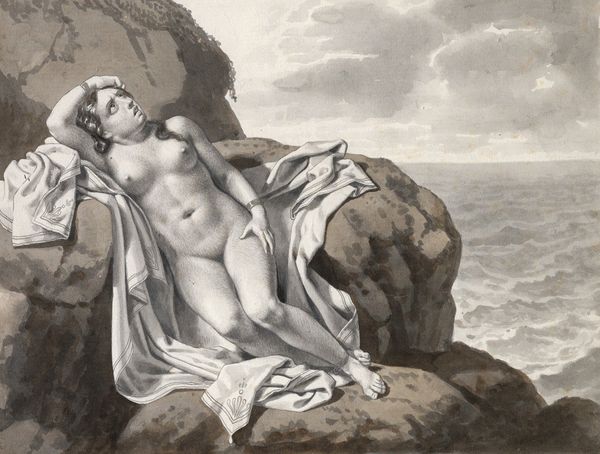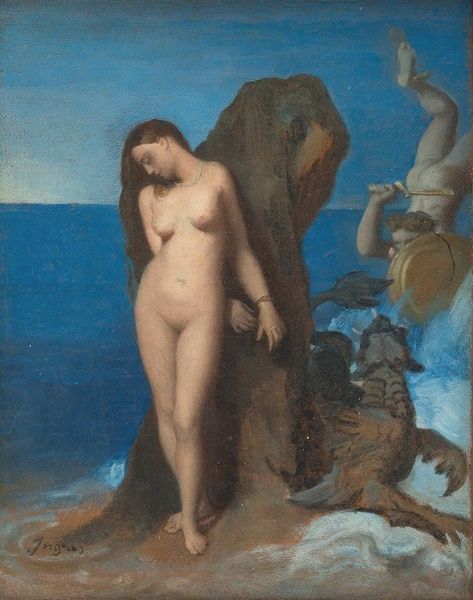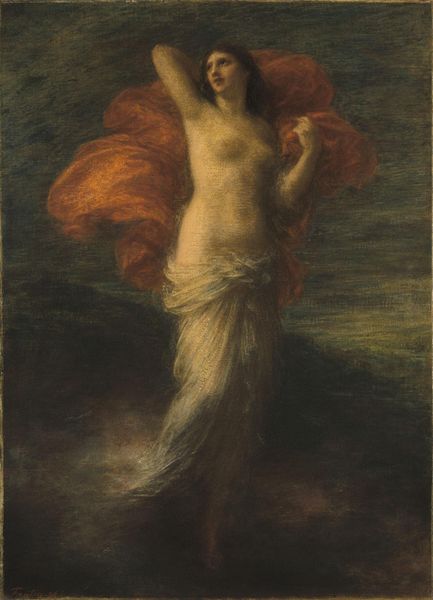
Copyright: Public Domain: Artvee
Editor: So, this is Henri Lehmann's "Calypso," painted in 1869 using oil on canvas. It's strikingly melancholic, almost like she’s part of the storm. How do you interpret this work? Curator: What I see is the enduring power of symbols. The nymph Calypso, forever stranded on her island, longing for Odysseus. Lehmann captures this profound sense of loss and isolation through carefully chosen iconography. Consider the turbulent sea – a visual metaphor for her inner turmoil. The rocky shore, her unyielding prison. Even the reddish-purple cloth evokes themes of royalty and sacrifice, but ultimately of mourning. Editor: Sacrifice? Is that her choice or imposed upon her? Curator: Perhaps it is both. The Romantics often explored the tension between free will and fate. Look at the downward cast of her eyes, the languid pose; they speak of resignation. The symbols of her story, of female lamentation are layered one over the other: isolation, yearning, powerlessness in the face of the storm. Editor: That's interesting. I was mostly reacting to the rather obvious portrayal of female sadness. Curator: And that sadness, itself, is a loaded symbol, no? Consider the long history of female figures representing both beauty and sorrow, from mythological figures like Calypso, to depictions of Mary Magdalene. It raises the question: what cultural baggage are we carrying when we see her image? Editor: I guess I hadn’t thought of her sadness as symbolic, more just…sadness. Now I’m wondering what other symbols I might be missing in other works! Curator: The search for symbols is, itself, the path to greater understanding. Keep looking!
Comments
No comments
Be the first to comment and join the conversation on the ultimate creative platform.



